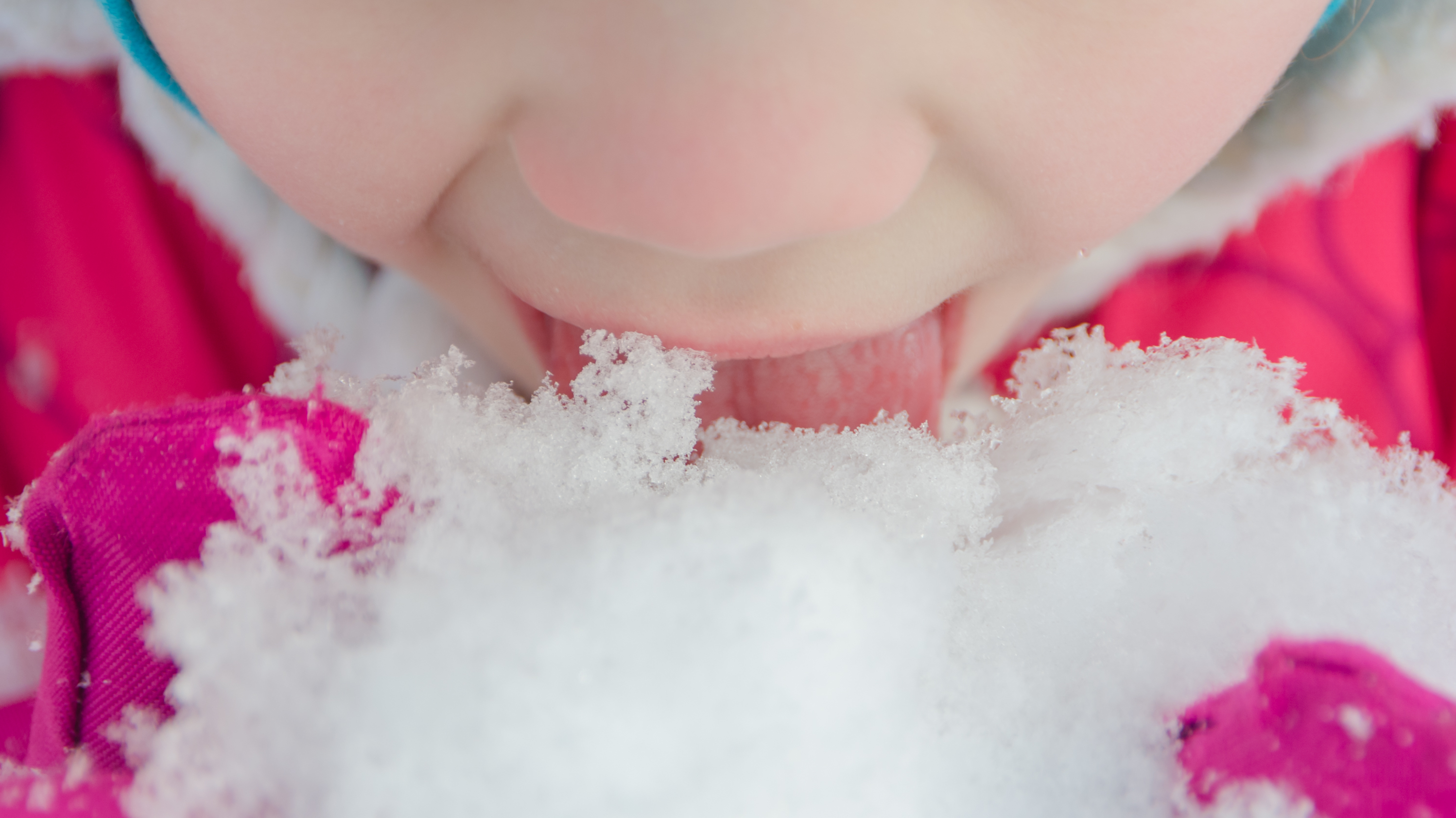Is It Safe To Eat Snow?
My middle-school-aged daughter is a straight-A student, a gifted artist, confident, intelligent, basically the person I'd like to be when I grow up. So imagine my horror when I discovered her new habit this winter: Eating snow.
Granted, it's been a bitch of a winter here in Chicago, so I should be glad she's finding some enjoyment in it? It's not like she's eating it out of the gutter or, god forbid, from the yellow section: Her precipitation of choice is pure white fluffy stuff that lands on top of a fence. We'll be walking to school and she'll say, "One minute," and then go grab a frozen outdoor snack. While I scream, internally and/or audibly: "Nooooooooooo!"
So, it was time to ask some experts about the safety of this hibernal habit. Lisa McManus, executive editor of tastings and testings at America's Test Kitchen, stressed strongly that snow was "not something we've actually tested," so this was just her opinion. She thought that snow-eating would be "entirely location-dependent... I wouldn't do it in New York or Chicago" (dang), due to the pollutants inherently surrounding that pristine-looking snow. But it's really less about what's in the snow/rain water and more about what the snow itself is actually touching.
Stephanie Smith, consumer food safety specialist and assistant professor at Washington State University, agreed that location is everything when it comes to snow-eating. "If the snow is falling from the sky, and you open your mouth to catch a few flakes, it is very unlikely that it will cause any illness," she reasoned. Like Linus in A Charlie Brown Christmas.
"However, as a food safety specialist, I do not recommend that people eat snow that has fallen on the ground or come into contact with another surface." That snow "could now be potentially contaminated with harmful microorganisms that could make someone sick. Microorganisms can be easily transferred to snow from people's shoes, a flying bird that defecates, dog feces, and a host of other disgusting sources. Depending on where the snow is located, it could also contain chemical contaminants, such as deicer, fuel from leaking vehicles, pesticides, and a host of other chemicals." So my daughter's clean-snow preference isn't as bad as some other options, but probably still isn't pristine.
Chiming in on this theme is Dr. Nicole Garneau, health sciences curator and department chair of the Denver Museum of Nature & Science, who says: "Snow is safe to eat when considering locations with little to no air pollution," so again, not here in Chicago. She adds, "For more detailed explanation of the various molecules dissolved in snow (beyond the H2O of course) would need to be addressed by a climatologist and is region (and actually even neighborhood) specific."
So, I turned to a local: Mike Caplan, meteorologist for Chicago's WFLD-TV. He assured me, "I would see no issues from eating small quantities of pristine snow. Whatever pollutants snow might absorb on the way down are well below toxic levels." But, he added, "Obviously never eat plowed snow or yellow snow!" Dr. Jeffrey Linder, chair of general internal medicine at Northwestern University Feinberg School of Medicine, agrees, "If the snow is clean, then it's safe to eat," which is frankly all the endorsement I need.
Like a lot of the stuff kids do, eating snow may not be the smartest, but it's also likely to be an age-related phase. My daughter is far from the first kid to snack on snow, nor will she be the last. Dr. Garneau says, "Bottom line, kids know their cravings and also have oral fixations. Up water intake. I recommend crushed ice made from filtered water to fix the daughter's fix!"
Even America's Test Kitchen's McManus says, "You probably can't eat enough of it to pollute yourself." Granted, she is saying this as "someone who grew up in New England," and reminds me that Laura Ingalls Wilder talked about making snow candy in her books. Some kids just can't resist eating snow, and my daughter is one of them.
Since she works at America's Test Kitchen, McManus suggests taking our local snow in to have it tested, a project that I may suggest for my daughter's next science fair. In the meantime, I might let my girl still have a handful right off the top of fresh-fallen snow, and try to keep the internal/external screaming to a minimum. With any luck, she'll grow out of this by next winter, right?
